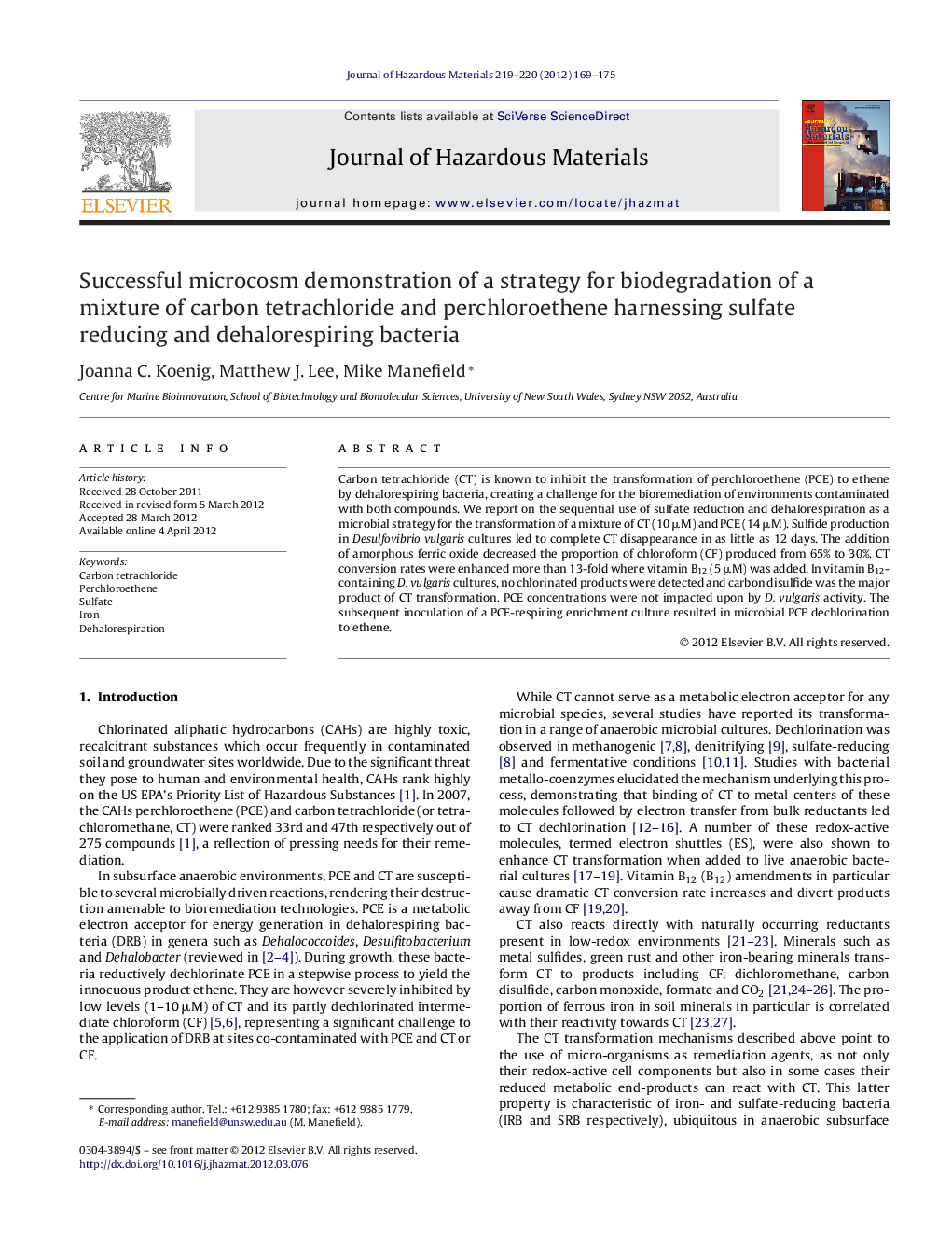| Article ID | Journal | Published Year | Pages | File Type |
|---|---|---|---|---|
| 578030 | Journal of Hazardous Materials | 2012 | 7 Pages |
Abstract
Carbon tetrachloride (CT) is known to inhibit the transformation of perchloroethene (PCE) to ethene by dehalorespiring bacteria, creating a challenge for the bioremediation of environments contaminated with both compounds. We report on the sequential use of sulfate reduction and dehalorespiration as a microbial strategy for the transformation of a mixture of CT (10 μM) and PCE (14 μM). Sulfide production in Desulfovibrio vulgaris cultures led to complete CT disappearance in as little as 12 days. The addition of amorphous ferric oxide decreased the proportion of chloroform (CF) produced from 65% to 30%. CT conversion rates were enhanced more than 13-fold where vitamin B12 (5 μM) was added. In vitamin B12-containing D. vulgaris cultures, no chlorinated products were detected and carbon disulfide was the major product of CT transformation. PCE concentrations were not impacted upon by D. vulgaris activity. The subsequent inoculation of a PCE-respiring enrichment culture resulted in microbial PCE dechlorination to ethene.
Related Topics
Physical Sciences and Engineering
Chemical Engineering
Chemical Health and Safety
Authors
Joanna C. Koenig, Matthew J. Lee, Mike Manefield,
